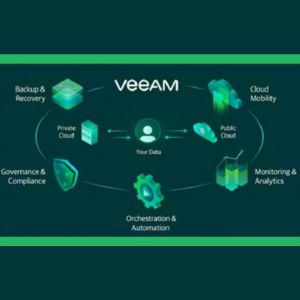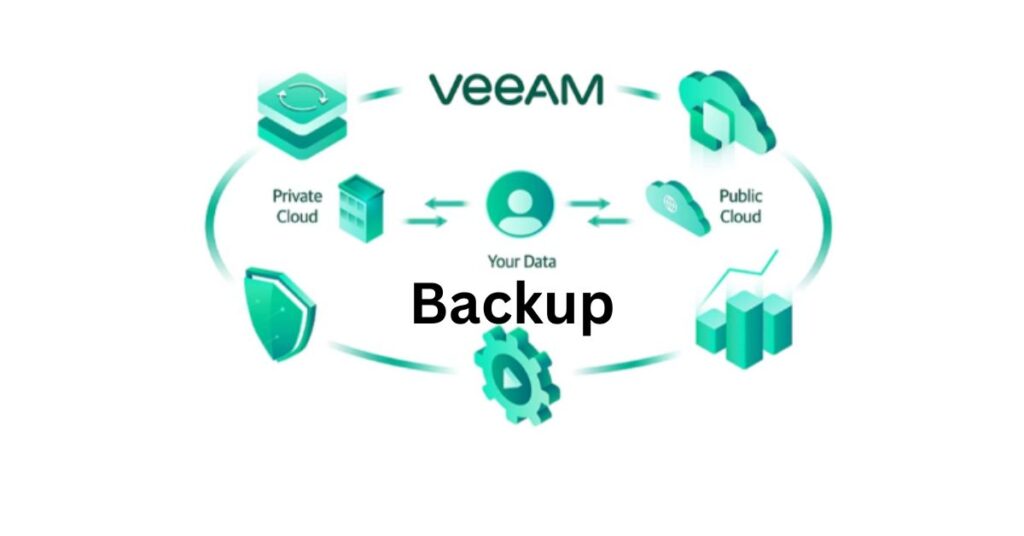Data loss can have extreme ramifications for organizations, making it fundamental to have a strong reinforcement arrangement set up. It is a powerful information security application designed to safeguard basic data and ensure business growth. In this article, we’ll look into Veeam backup’s components, benefits, and operational details.
It offers far reaching reinforcement and recuperation abilities for virtual, physical, and cloud conditions. With its natural connection point and high level elements, it has turned into a favored decision for associations, all things considered.
Highlights and Advantages of Veeam Backup
Veeam Backup provides a wide range of features that enhance data protection. It offers:
Solid reinforcement and recuperation: Veeam Reinforcement makes picture based reinforcements, catching the whole framework, including the working framework, applications, and information. This guarantees speedy and productive recuperation in case of information misfortune or framework disappointment.
Agentless design: It uses virtual machine (VM) depictions and APIs to perform reinforcements without the requirement for introducing specialists on individual VMs. This simplifies management and reduces resource consumption.
Instant VM recovery: It allows for near-instant recovery of VMs by running them directly from the backup storage.
Data deduplication and compression: It optimizes storage usage by deduplicating and compressing data. This reduces storage costs and accelerates backup and recovery operations.
Supported Platforms and Environments

Veeam Reinforcement supports various platforms and environments, including:
VMware vSphere and Microsoft Hyper-V virtual environments
Cloud stages like Amazon Web Administrations (AWS) and Microsoft Sky blue.
Actual Windows or Linux servers and workstations
How Veeam Backup Works?
It follows a straightforward process to protect data:
Veeam Backup Configuration
Administrators define backup jobs and specify the desired backup options, such as frequency and retention period.
Initial full backup
It performs the initial full backup, capturing all the data according to the specified settings.
Incremental backups
After the initial backup, Veeam Reinforcement creates subsequent incremental backups that only capture changes made since the last backup. As a result, backup times are cut down and storage needs are decreased.
Data deduplication
Veeam Reinforcement utilizes data deduplication techniques to identify and store only unique data blocks. This further optimizes storage usage and reduces backup storage requirements.
Replication and disaster recovery
Veeam Backup allows for replication of backups to remote locations for disaster recovery purposes. This ensures that critical data is always available, even in the event of a catastrophic failure.
Best Practices

To maximize the effectiveness of Veeam backup consider the following best practices:
Planning and designing Veeam Backup solution: Evaluate your organization’s requirements, storage capacity, and retention policies to design an optimal backup solution.
Setting up backup schedules and retention: Define backup schedules that align with your organization’s RPO (Recovery Point Objective) and retention policies. Regularly review and adjust backup configurations as needed.
Monitoring and managing backups: Keep a close eye on backup jobs and monitor their completion status. Implement proactive alerts to ensure prompt action is taken in case of backup failures.
Testing and verifying backup integrity: Regularly test the restore process to ensure backups are valid and can be successfully recovered. Perform integrity checks to identify and resolve any issues with the backup data.
Implementing offsite and cloud backups:
Consider replicating backups to offsite or cloud storage for additional redundancy and protection against site-level disasters. This ensures data availability even in the face of catastrophic events.
Conclusion
Veeam Reinforcement is a robust and reliable data protection solution that offers comprehensive backup and recovery capabilities. Its features, such as instant VM recovery and data deduplication, enable organizations to protect their critical data effectively. By following best practices and implementing Veeam Backup, businesses can ensure business continuity and minimize the impact of data loss.
FAQs
1: Can Veeam Backup be used for virtual machines?
Yes, Veeam Reinforcement supports virtual machines running on VMware vSphere and Microsoft Hyper-V environments.
2: Does Veeam Backup support encryption?
Yes, It provides built-in encryption options to secure backup data both in transit and at rest.
3: What amount of time does it require to reestablish information with Veeam Reinforcement?
The reestablishment time relies upon different factors like the size , the reinforcement stockpiling foundation, and the objective area. Veeam Backup ‘s productive recuperation instruments expect to limit free time.
4: Can Veeam Backup be integrated with other tools?
Yes, Veeam Backup offers APIs and integrations with other IT management tools, enabling seamless integration into existing infrastructure.
5: Is Veeam Reinforcement appropriate for independent companies?
Indeed, Veeam Reinforcement takes special care of organizations, everything being equal, including little and medium undertakings (SMEs), giving them a practical and solid reinforcement arrangement.

